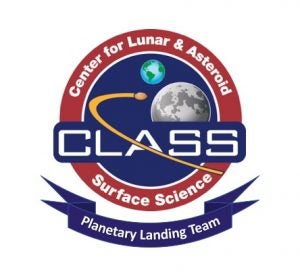
Menu
* Background
* The Science of Plume Effects
* Geological Considerations
* Modeling Methods to Predict Plume Effects
* ISRU for Mitigating Plume Effects
* Protecting the Apollo Sites
* Robotics to Build Extraterrestrial Spaceports
* For Students & Educators
Team Members
Philip Metzger, UCF – Planetary Landing Team Lead, Analysis and Sensors
Dan Britt, UCF – CLASS Lead and Planetary Environments
Wesley Chambers, MSFC – Asteroid Thruster Plume Effects
Mario De Pra, UCF – Planetary Surface Observations and Photometry
Adrienne Dove, UCF – Plasma Environment and Dust
Jason Dunn, Made In Space – Mitigation Technologies
Tarek Elgohary, UCF – Physics-based Modeling
Douglas Fontes, UCF – Physics-based Modeling, Analysis, and Experiments
David Goldstein, U. of Texas – Physics-based Modeling
Manish Mehta, NASA/MSFC – Plume Effects Research, Modeling & Instruments
Clive Neal, Notre Dame – Lunar Geology
Noemi Pinilla-Alonso, UCF – Planetary Surface Observations and Photometry
Dhaka Sapkota, UCF – Landing Pad Technology Development
Michael Snyder, Made In Space – Mitigation Technologies
Paul van Susante, Michigan Tech U. – Mitigation Technologies and Robotics
Estela Valenzuela, UCF – Planetary Surface Observations and Photometry
Flaviane C. F. Venditti – Spacecraft Dynamics
Lunar Lander and Flight Operations Team Members
Andrew Horchler, Astrobotic Technology
Sean Mahoney, Masten Space Systems
Mohamed Ragab, iSpace
Several additional lunar and planetary spacecraft companies
KSC Swamp Works Team Members
Rob Mueller, NASA/KSC – Chief Technologist of Swamp Works
Jim Mantovani, NASA/KSC – Plume Analysis and Sensors
Brad Buckles, KSC/LASSO – In-Situ Automated Additive Construction for Planetary Infrastructure
Nathan Gelino, NASA/KSC – In-Situ Automated Additive Construction for Planetary Infrastructure
Paul Hintze, NASA/KSC – Regolith Sintering Technologies and Surface Stabilization
Michael Johansen, NASA/KSC – Plasma and Dust Research and Modeling
Jim Mantovani, NASA/KSC – Plume Effects Research and Modeling
A.J. Nick, KSC/LASSO – Surface Robotics & Landing Pad Construction
Jason Schuler, NASA/KSC – Surface Robotics & Landing Pad Construction
Drew Smith, NASA/KSC Excavation Robotics and Extreme Environment Cryobotics
Bruce Vu, NASA/KSC – Physics-Based Modeling
Overview
When rockets land on planets, the rocket exhaust will produce dramatically different effects depending on the gravity and size of the spacecraft, the mechanical strength and porosity of the soil, and the density of the atmosphere. In lunar landings, a spacecraft the size of the Apollo Lunar Module will blow away more than a ton of soil, dust, and rocks at high velocity. For human-class landers on Mars, the supersonic jet will dig a deep, narrow crater that redirects a jet of gas carrying rocks and sand back up at the landing spacecraft.
We need to understand the physics of these effects so we can predict and control them. The Apollo 12 Lunar Module landed on the Moon just 160 m away from the Surveyor 3 spacecraft, and the spray of sand and dust from the Lunar Module thoroughly scoured and pitted the Surveyor’s surface. This kind of sandblasting can ruin optics and thermal control surfaces. The impact of rocks can destroy hardware. The chemicals in the rocket exhaust can disturb scientific measurements in the landing zone.
Strategies to mitigate these effects include building landing pads on the Moon or Mars. To do so, we need to develop the robotics with technologies that use the planets’ local resources as building materials. We also need to develop the artificial intelligence so these robots can function autonomously, escaping limitations of the speed-of-light communications delay back to Earth.
The CLASS Planetary Landing Team includes world-leading experts in these topic areas. We have already made significant progress developing the science and technology to enable safe, effective landings on other planets, and we are ready to support the lunar and Martian landings of the future.
